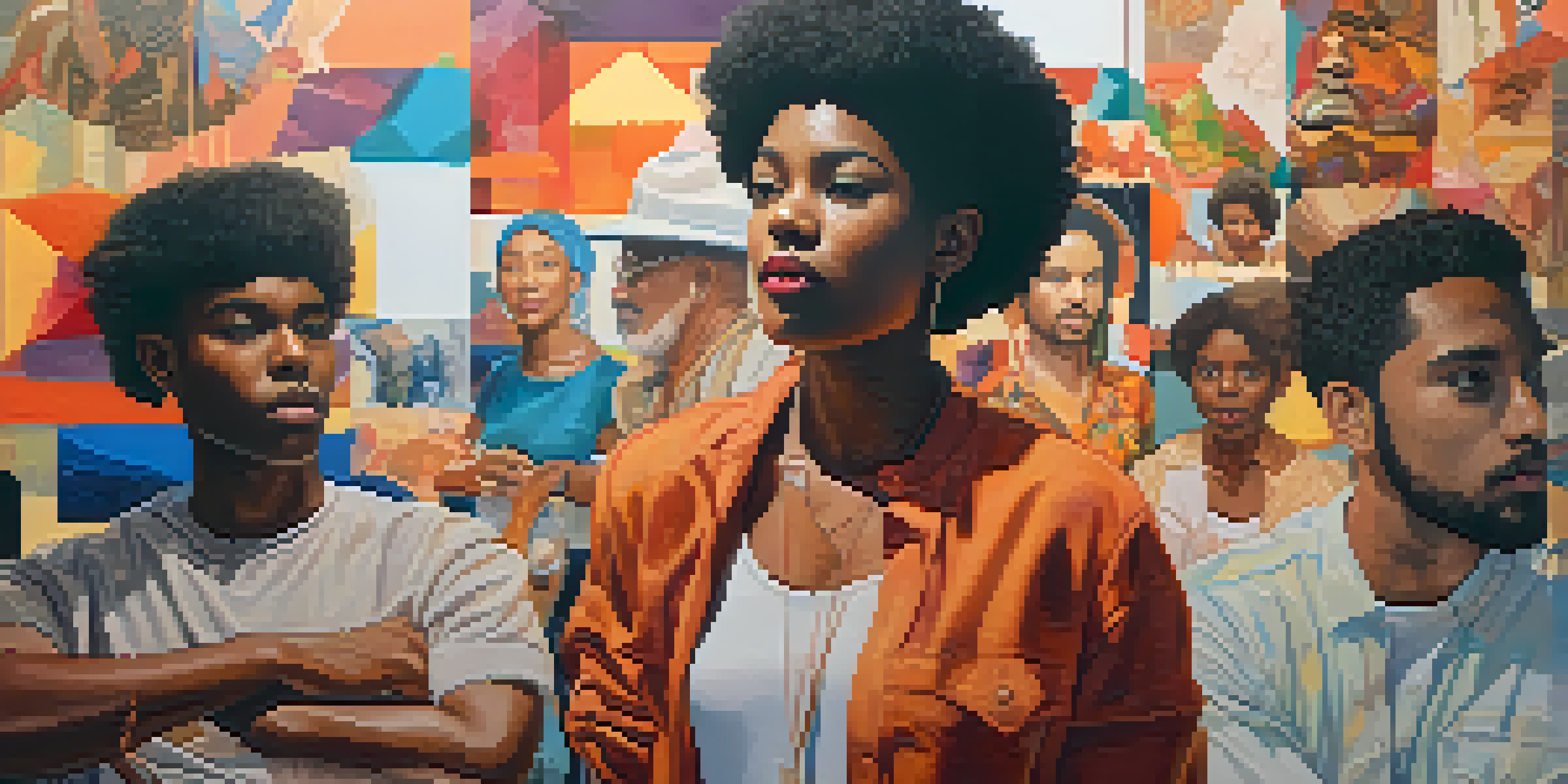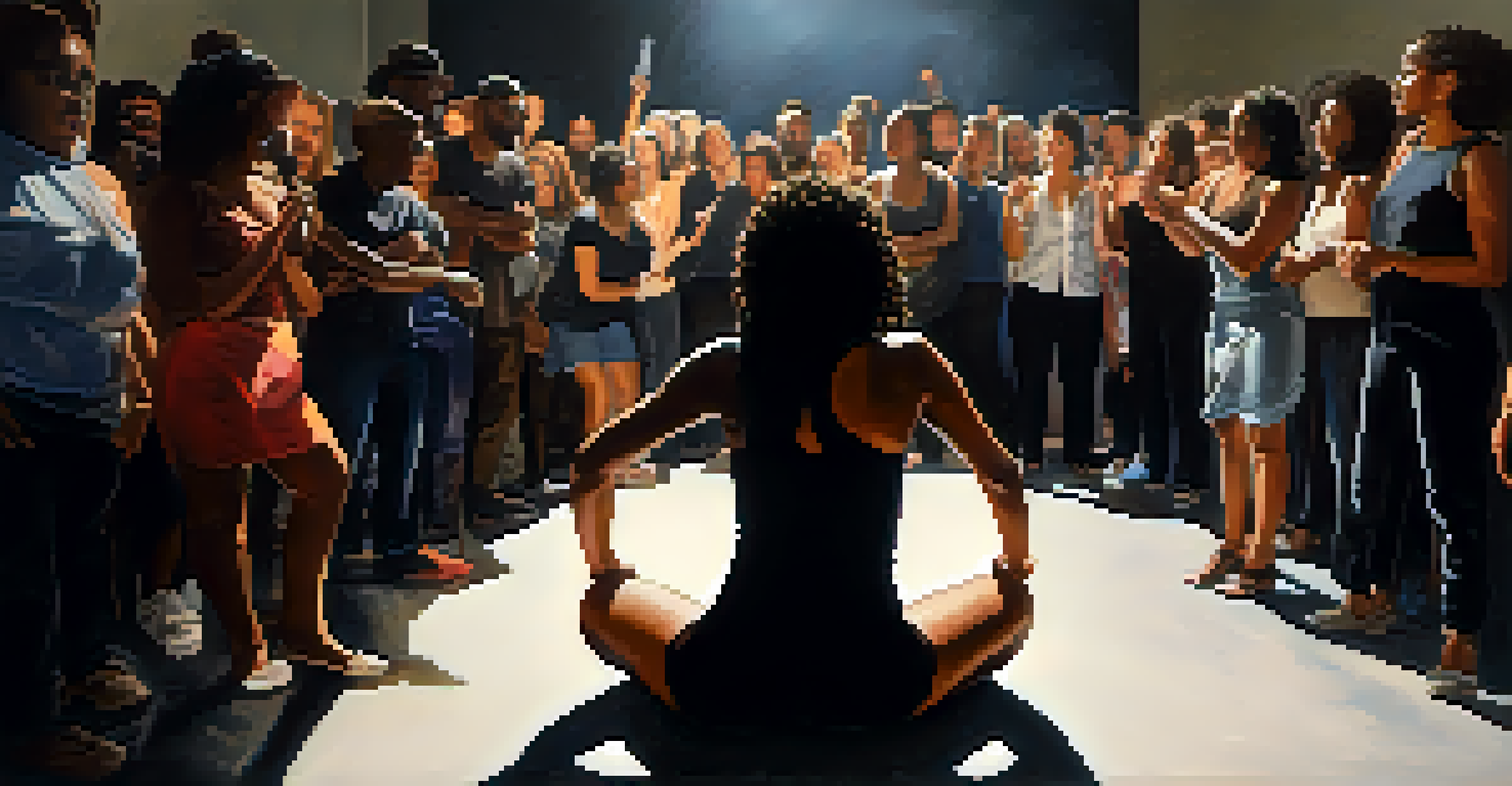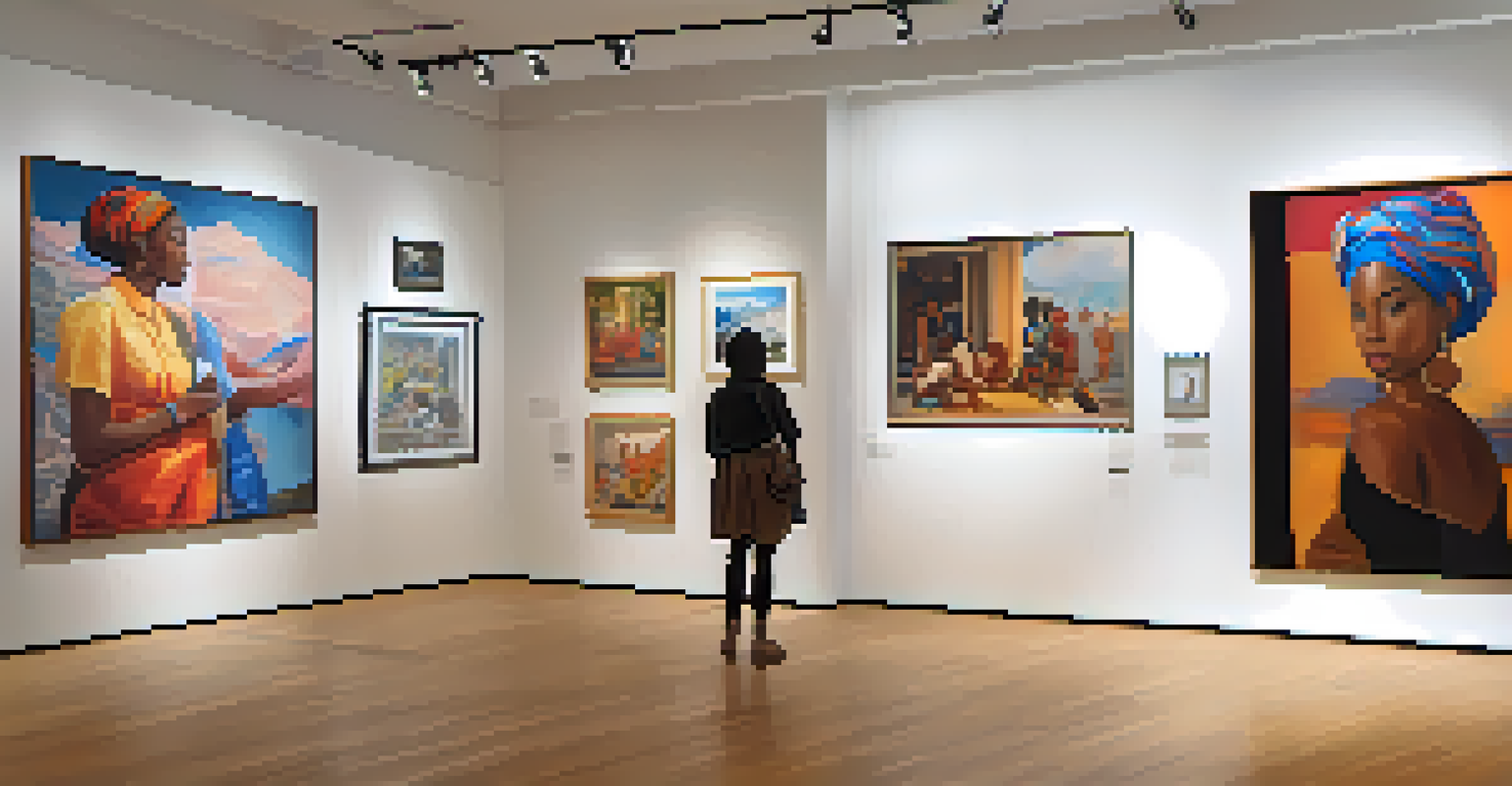The Intersection of Race and Gender Identity in Art

Understanding the Basics: Race and Gender Identity Defined
To appreciate the intersection of race and gender identity in art, we first need to clarify these concepts. Race refers to the classification of people based on physical characteristics, while gender identity is how individuals perceive themselves and what they call themselves, often aligning with or diverging from societal norms.
Art is not a mirror held up to reality, but a hammer with which to shape it.
Both race and gender identity are deeply personal and can influence one another. For instance, a person's experiences as a woman of color may differ vastly from those of a white woman or a man of color. By understanding these differences, we can begin to see how artists express their unique perspectives.
Art becomes a powerful medium for exploring and communicating these identities. Whether through painting, sculpture, or performance, artists can share their experiences and challenge societal norms, making this intersection a rich area for exploration.
Historical Context: Art Movements and Identity Politics
Throughout history, various art movements have reflected the social and political climates of their times. The Harlem Renaissance, for instance, showcased African American culture and identity, while feminist art movements have focused on women's rights and experiences. These movements often intersect, revealing the complexities of race and gender.

Artists like Frida Kahlo and Faith Ringgold used their work to address their identities as women of color in predominantly male and Eurocentric art scenes. Their art serves as a commentary on the societal expectations placed upon them, creating a dialogue about race and gender that resonates even today.
Intersection of Race and Gender
Understanding how race and gender identity interact shapes the way artists express their unique perspectives.
By examining these movements, we can better understand how artists have historically navigated and expressed their identities. This context allows us to appreciate the ongoing evolution of race and gender representation in contemporary art.
Contemporary Art: Voices of Marginalized Communities
Today, contemporary artists from diverse backgrounds continue to explore the intersections of race and gender identity. Many use their platforms to amplify voices that have historically been silenced. Artists like Kehinde Wiley and Zanele Muholi challenge traditional portrayals of race and gender, creating powerful imagery that speaks to their experiences.
The personal is political.
Social media and digital platforms have also opened new avenues for expression. Many artists are able to reach global audiences, sharing their narratives and engaging in conversations about identity in real-time. This democratization of art allows for a richer tapestry of voices and experiences.
Through their work, these artists encourage viewers to reflect on their own biases and assumptions. This interaction not only enriches the art itself but also fosters a deeper understanding of the complexities surrounding race and gender.
Intersectionality: A Framework for Understanding Identity
Intersectionality is a term coined by scholar Kimberlé Crenshaw that describes how various forms of identity—such as race, gender, sexuality, and class—interact and overlap. This framework is crucial when examining art because it acknowledges that individuals experience multiple identities simultaneously, influencing their perspectives and expressions.
Artists who embrace intersectionality often create work that reflects the multifaceted nature of their experiences. Their art can illuminate the challenges and triumphs faced by those at the intersections of various identities, providing a more nuanced view of society.
Art as a Tool for Activism
Artists leverage their work to challenge societal norms and provoke discussions around race and gender identity.
By applying an intersectional lens, we not only enrich our understanding of art but also promote empathy and awareness. This approach encourages us to listen to and uplift diverse voices, recognizing the complexity of human experience.
Art as Activism: Challenging Societal Norms
Art has long been a vehicle for activism, with artists using their work to challenge societal norms and provoke thought. This is particularly relevant when examining race and gender identity, as many artists aim to confront stereotypes and advocate for change.
For example, performance art can powerfully express the emotional and physical experiences of marginalized identities. Artists like Marina Abramović and LaToya Ruby Frazier use their bodies and narratives to highlight issues of race, gender, and socio-economic status, prompting viewers to engage critically.
This form of activism is not only about raising awareness; it often seeks to inspire action. By provoking discussion and reflection, artists can motivate audiences to challenge their own perceptions and contribute to broader societal change.
The Role of Institutions: Supporting Diverse Art Forms
Art institutions, such as galleries and museums, play a pivotal role in supporting artists from diverse backgrounds. However, these institutions have historically favored Eurocentric and male-dominated narratives, often sidelining artists from marginalized communities. Recognizing this bias is essential for fostering a more inclusive art world.
Many galleries and museums are now striving to diversify their exhibitions and collections. Initiatives that focus on showcasing artists of color and LGBTQ+ artists help to challenge the traditional narratives and broaden the understanding of race and gender identity in art.
Future of Diverse Representation
Emerging artists are redefining identity expression, promoting authenticity and relatability in the art world.
By amplifying these voices, institutions can create spaces for dialogue and education. This not only enriches the art community but also allows for greater representation and understanding of the diverse identities that shape our world.
Looking Ahead: The Future of Identity in Art
As we look to the future, the intersection of race and gender identity in art will continue to evolve. Emerging artists are constantly redefining how they express their identities, often blending mediums and styles to create unique narratives. This innovation keeps the conversation fresh and relevant.
Moreover, as society becomes increasingly aware of issues related to race and gender, the demand for diverse representation in art will likely grow. Audiences are seeking authenticity and relatability, pushing artists to explore their identities more deeply and boldly.

The future of art is not only about aesthetics—it's about storytelling and connection. By continuing to explore the intersections of race and gender identity, artists can foster understanding and empathy, paving the way for a more inclusive and vibrant art world.